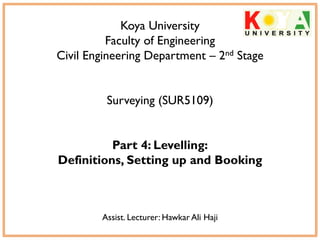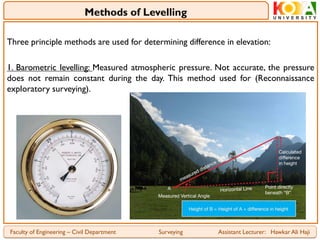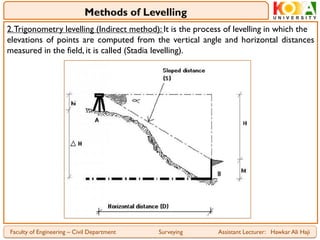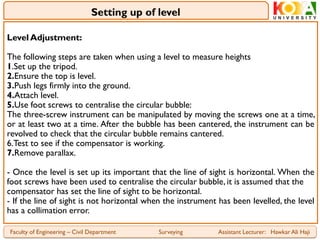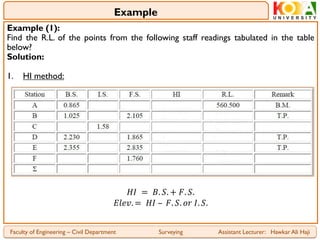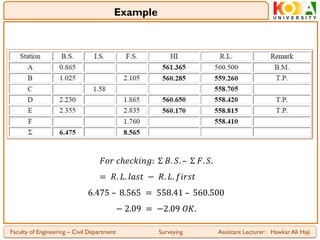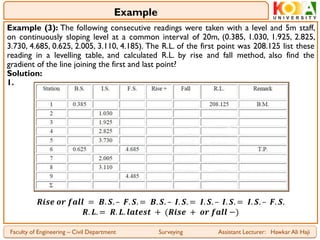The document discusses levelling in surveying. It defines key terms like benchmark, reduced level, and mean sea level. It describes three methods for determining elevation differences: barometric levelling, trigonometric levelling, and direct levelling using a level instrument and staff. The direct method is the most accurate and involves setting up the level, adjusting it for precise horizontal alignment, and taking backsight and foresight staff readings to calculate point elevations. The document also covers how to properly book or reduce field notes and calculate point elevations from observed staff readings.
